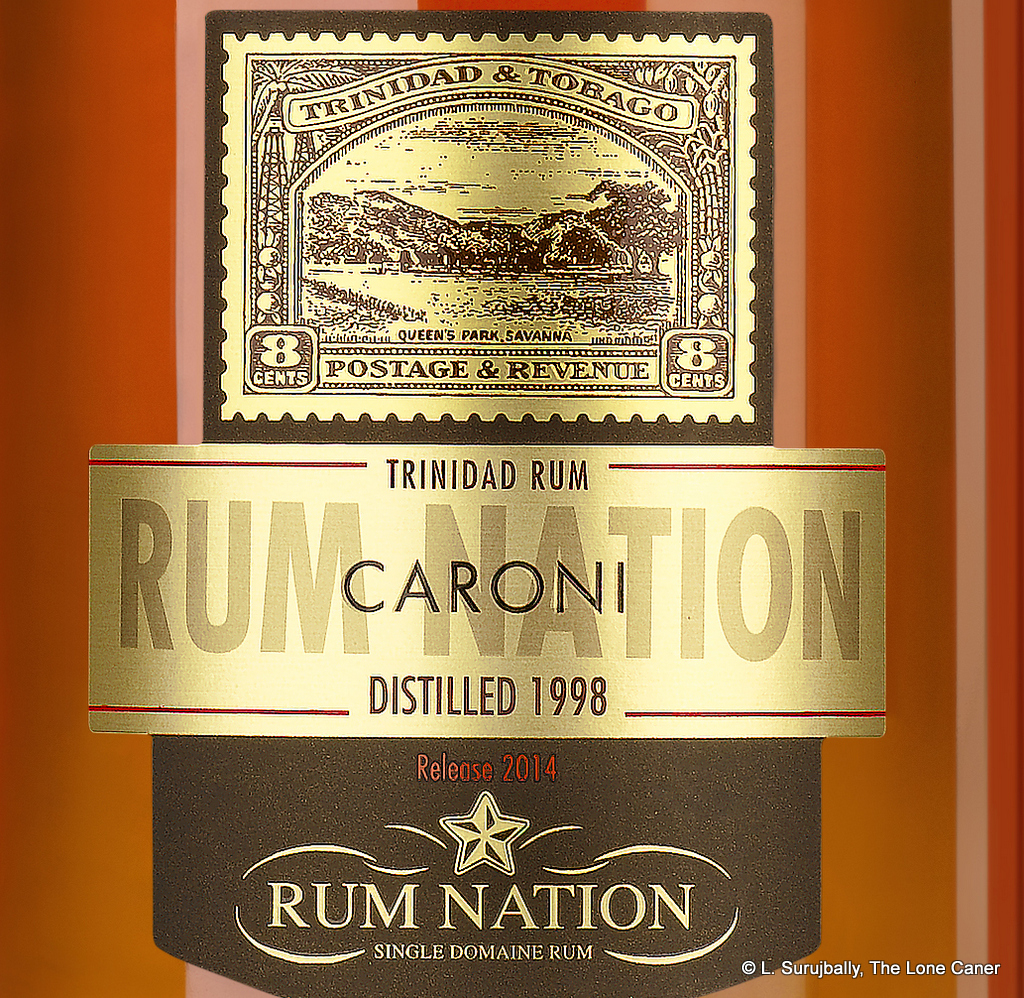It’s easy to sneer at standard strength rums in a time of sullen cask-strength hoods issued north of 60%, 70% or even 80%. Those have tastes that attack and maul your extremities, aromas that lunge into your nose with intent to maim, and profiles that burst at the seams with all sorts of…well, something. Badassery, maybe. In contrast, forty-percenters are considered meek and mild, barely sniffable, weak, easy and not altogether “serious”. Best leave them to the Spanish style roneros. They can have ‘em – here we deal in proof, pard.
 Rather than simply issuing such soft multi-country blends, Rum Nation takes a different approach to standard strength rums – they merely consider them as entry level rums, made for the audience that wants something better than merely another Bacardi wannabe, but doesn’t appreciate some rude over-muscled Trenchtown brawler invading the living room. So a number of their lower cost rums from around the Caribbean continue to be released at that strength and are a complement to their more exclusive, up-market Rare Cask editions.
Rather than simply issuing such soft multi-country blends, Rum Nation takes a different approach to standard strength rums – they merely consider them as entry level rums, made for the audience that wants something better than merely another Bacardi wannabe, but doesn’t appreciate some rude over-muscled Trenchtown brawler invading the living room. So a number of their lower cost rums from around the Caribbean continue to be released at that strength and are a complement to their more exclusive, up-market Rare Cask editions.
One of these is the Panama ten year old limited edition from the 2018 season (it had been introduced the year before – this is the second iteration). The bottle’s presentational and informational ethic is something of a victory of style over substance, because pretty as it is, we don’t actually get much data: it tells us Panama, 40% ABV, 10 YO and 2018 release on the front and back labels, and that’s it. Everything else is fluff, and given what fans of today almost demand on their labels, it’s an odd omission to leave out the distillery of make or the still type. Based on past experience with Rum Nation, I’d suggest they continue to source distillate from Varela Hermanos (home of the Abuelo brand), and given it’s from Panama the likelihood of it being a column still product is high. Aged in ex-bourbon barrels, diluted to forty, and there you are. We’re still in the dark as to what “limited” means, though — how many barrels are involved and what the outturn is, remain unknowns.
I’ve made no secret of my initial liking for Panamanians a decade back and how I gradually fell away from their soothing, silky style. That’s not to say they do not remain approachable, and very likeable: they are, and remain so. Here for example, the nose was light, clean and smooth, medium sweet, redolent of vague florals and bubble gum. Some fruits, caramel, raisins, vanilla, and a touch of molasses and toffee, nicely blended, but not standing out in any way.
 The palate continued in that vein of niceness and weakly indeterminate everything-is-in-here tastes. It was sweet, and one can taste caramel, vanilla, flowers, bubble gum, and even sour cream. Also molasses, toffee and the damped down taste of soft bananas, dates, and a plum or two, leading to a short and meek finish which does not exit with a statement or exclamation point of any kind, just kind of sighs and walks off the stage.
The palate continued in that vein of niceness and weakly indeterminate everything-is-in-here tastes. It was sweet, and one can taste caramel, vanilla, flowers, bubble gum, and even sour cream. Also molasses, toffee and the damped down taste of soft bananas, dates, and a plum or two, leading to a short and meek finish which does not exit with a statement or exclamation point of any kind, just kind of sighs and walks off the stage.
This is my issue with Forties generally and to some extent rons in particular. Because they are made on an industrial multi-column still more often than not, and exit the still at a very high ABV, too many congeners and esters are stripped away. Therefore the relatively neutral starting profile off the still can only be enhanced by long ageing, good barrel management, secondary cask maturation / finishes…or additives. Here, I was told that 18 g/L of sugar was added, which explains a lot.
So for me, right now, it’s too faint, a touch too sweet and too mildly inoffensive. It lacks distinctiveness of any kind and is easily forgettable. It’s a good enough rum to drink when no thought is required (and the brief one-line tasting notes on rumratings show others have a similar experience), although with its added extras and weak-kneed pusillanimity, I don’t think I’d drink it much unless it was my intention to just have a tot of anything passable in the glass. There’s little beyond “nice” that you can use to describe it, yet it’s important to understand that if you think this way, the rum is not meant for you. It’s a decent enough rum made for those at this stage of their rum journey, and on that basis, Rum Nation really did provide all the info needed for such persons to chose it.
(#867)(74/100)





 I do, on the other hand, like the taste. It’s warm and rich and the Enmore still profile – freshly sawn lumber, sawdust, pencil shavings – is clear. Also sour cream, eggnog, and bags of dried, dark fruits (raisins, prunes, dried plums) mix it up with a nice touch of sandalwood. It takes its own sweet time getting the the point and is a little discombobulated throughout, but I can’t argue with the stewed apples, dried orange peel, ripe red guavas and licorice – it’s nice. The finish is quite solid, if unexceptional: it lasts a fair bit, and you’re left with closing notes of licorice, oak chips, vanilla, dried fruit and black cake.
I do, on the other hand, like the taste. It’s warm and rich and the Enmore still profile – freshly sawn lumber, sawdust, pencil shavings – is clear. Also sour cream, eggnog, and bags of dried, dark fruits (raisins, prunes, dried plums) mix it up with a nice touch of sandalwood. It takes its own sweet time getting the the point and is a little discombobulated throughout, but I can’t argue with the stewed apples, dried orange peel, ripe red guavas and licorice – it’s nice. The finish is quite solid, if unexceptional: it lasts a fair bit, and you’re left with closing notes of licorice, oak chips, vanilla, dried fruit and black cake.

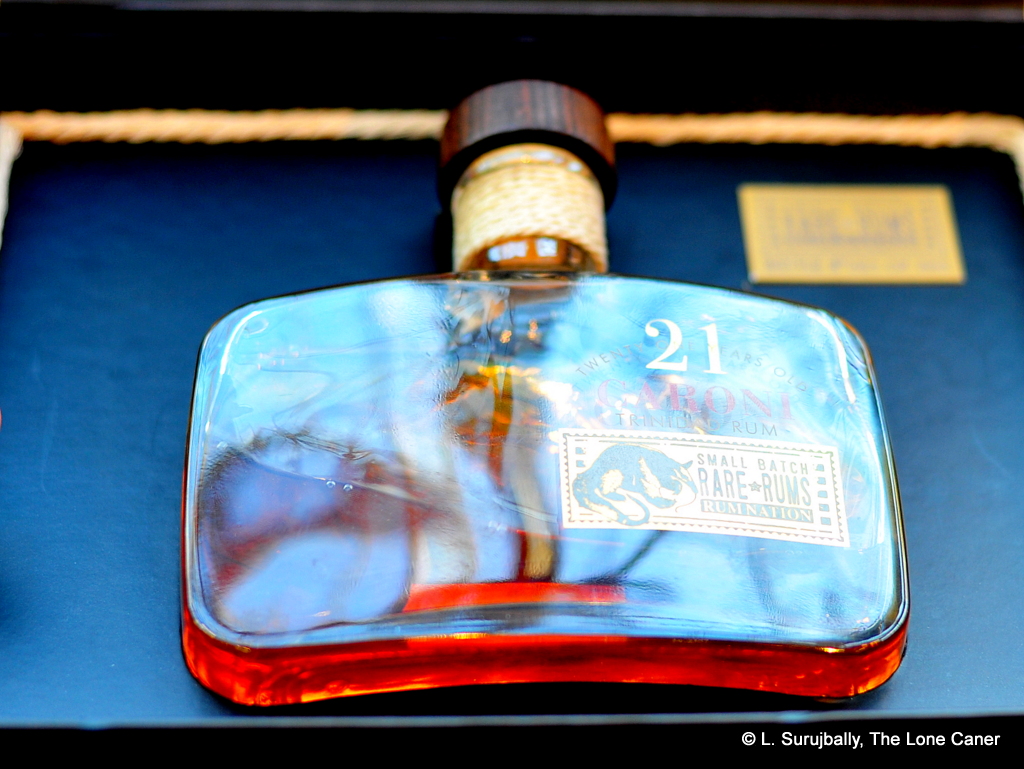

 Rum Nation’s own
Rum Nation’s own 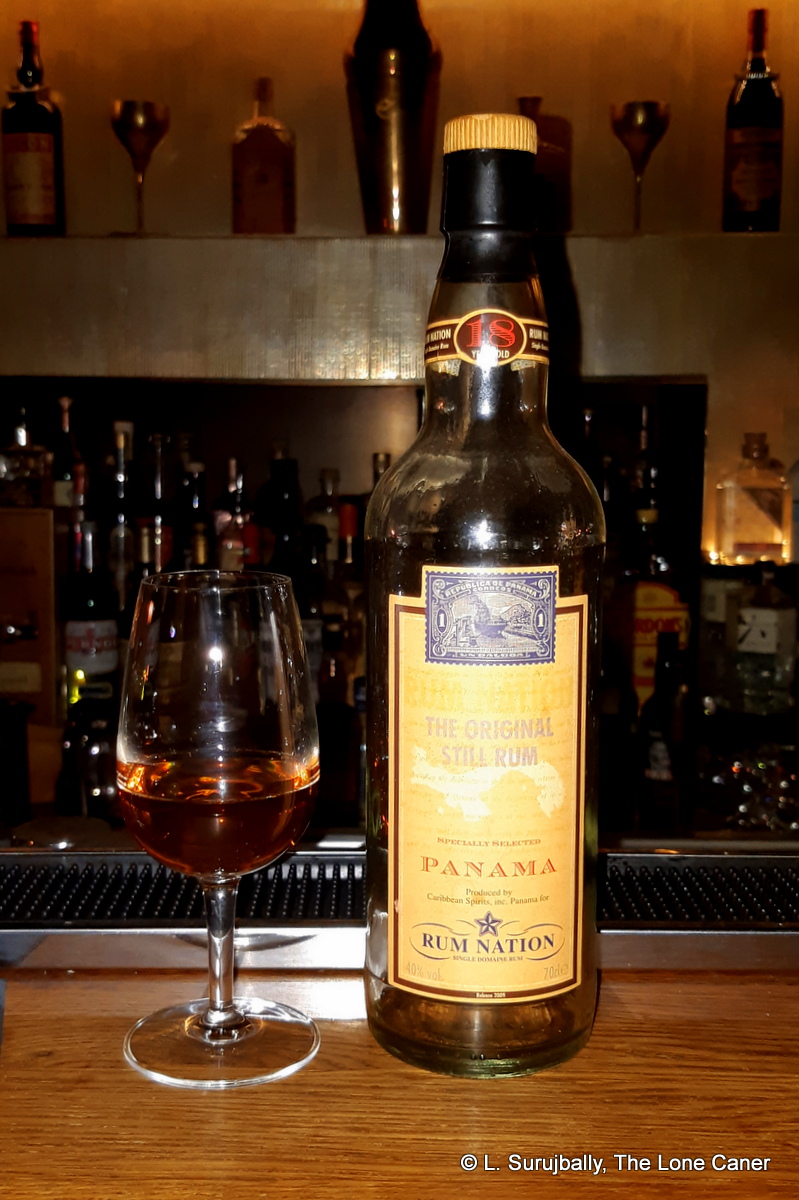 The Rum Nation Panama 2009 edition exists in a peculiar place of my mind, since it’s the unavailable, long-gone predecessor of the
The Rum Nation Panama 2009 edition exists in a peculiar place of my mind, since it’s the unavailable, long-gone predecessor of the 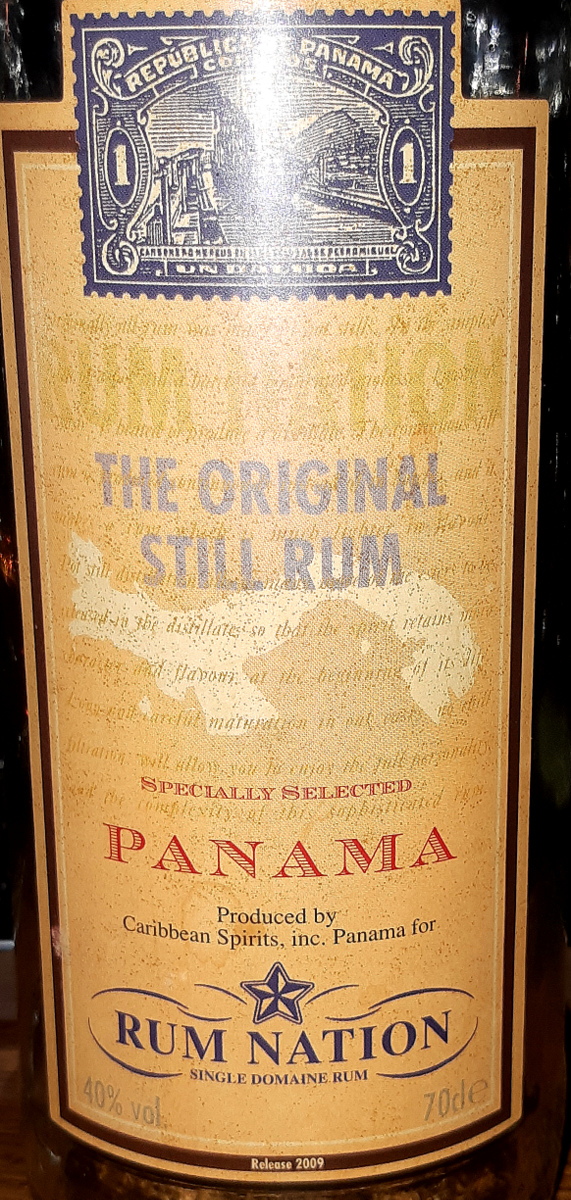 That was the smell, but what did it taste like? Eighteen years in a barrel must, after all, show its traces. To some extent, yes: again,
That was the smell, but what did it taste like? Eighteen years in a barrel must, after all, show its traces. To some extent, yes: again, 

 Some rums falter on the taste after opening up with a nose of uncommon quality – fortunately Rum Nation’s Réunion Cask Strength rum (to give it its full name) does not drop the ball. It’s sharp and crisp at the initial entry, mellowing out over time as one gets used to the fierce strength. It presents an interesting combination of fruitiness and muskiness and crispness, all at once – vanilla, lychee, apples, green grapes, mixing it up with ripe black cherries, yellow mangoes, lemongrass, leather, papaya; and behind all that is brine, olives, the earthy tang of a soya (easy on the vegetable soup), a twitch of wet cigarette tobacco (rather disgusting), bitter oak, and something vaguely medicinal. It’s something like a Hampden or WP, yet not — it’s too distinctively itself for that. It displays a musky tawniness, a very strong and sharp texture, with softer elements planing away the roughness of the initial attack. Somewhat over-oaked perhaps but somehow it all works really well, and the finish is similarly generous with what it provides — long and dry and spicy, with some caramel, stewed apples, green grapes, cider, balsamic vinegar, and a tannic bitterness of oak, barely contained (this may be the weakest point of the rum).
Some rums falter on the taste after opening up with a nose of uncommon quality – fortunately Rum Nation’s Réunion Cask Strength rum (to give it its full name) does not drop the ball. It’s sharp and crisp at the initial entry, mellowing out over time as one gets used to the fierce strength. It presents an interesting combination of fruitiness and muskiness and crispness, all at once – vanilla, lychee, apples, green grapes, mixing it up with ripe black cherries, yellow mangoes, lemongrass, leather, papaya; and behind all that is brine, olives, the earthy tang of a soya (easy on the vegetable soup), a twitch of wet cigarette tobacco (rather disgusting), bitter oak, and something vaguely medicinal. It’s something like a Hampden or WP, yet not — it’s too distinctively itself for that. It displays a musky tawniness, a very strong and sharp texture, with softer elements planing away the roughness of the initial attack. Somewhat over-oaked perhaps but somehow it all works really well, and the finish is similarly generous with what it provides — long and dry and spicy, with some caramel, stewed apples, green grapes, cider, balsamic vinegar, and a tannic bitterness of oak, barely contained (this may be the weakest point of the rum).

 And for anyone who enjoys sipping rich Jamaicans that don’t stray too far into insanity (the
And for anyone who enjoys sipping rich Jamaicans that don’t stray too far into insanity (the  The rum continues along the path set by all the seven Supreme Lords that came before it, and since I’ve not tried them all, I can’t say whether others are better, or if this one eclipses the lot. What I do know is that they are among the best series of Jamaican rums released by any independent, among the oldest, and a key component of my own evolving rum education.
The rum continues along the path set by all the seven Supreme Lords that came before it, and since I’ve not tried them all, I can’t say whether others are better, or if this one eclipses the lot. What I do know is that they are among the best series of Jamaican rums released by any independent, among the oldest, and a key component of my own evolving rum education. 
 Anyway, here’s what it was like. The nose of the Ilha da Madeira fell somewhere in the middle of the line separating a bored “meh” from a more disbelieving “holy-crap!”. It was a light melange of a playful sprite-like aroma mixed in with more serious brine and olives, a little sweet, and delicate – flowers, sugar water, grass, pears, guavas, mint, some marzipan. You could sense something darker underneath – cigarette tar, acetones – but these never came forward, and were content to be hinted at, not driven home with a sledge. Not really a brother to that fierce Jamaican brawler, more like a cousin, a closer relative to the
Anyway, here’s what it was like. The nose of the Ilha da Madeira fell somewhere in the middle of the line separating a bored “meh” from a more disbelieving “holy-crap!”. It was a light melange of a playful sprite-like aroma mixed in with more serious brine and olives, a little sweet, and delicate – flowers, sugar water, grass, pears, guavas, mint, some marzipan. You could sense something darker underneath – cigarette tar, acetones – but these never came forward, and were content to be hinted at, not driven home with a sledge. Not really a brother to that fierce Jamaican brawler, more like a cousin, a closer relative to the 
 I’ll provide some more background detail in the Other Notes below, but for the moment let’s just read off the fact sheet for the rum which is very helpfully provided on the Rare Rums website and on the bottle label itself. This is a cane juice distillate and can therefore be classed as an agricole-style rhum; distilled 2009 and the four barrel outturn from a column still was aged in Madeira casks, providing 570 bottles in 2017, with a strength of 52%.
I’ll provide some more background detail in the Other Notes below, but for the moment let’s just read off the fact sheet for the rum which is very helpfully provided on the Rare Rums website and on the bottle label itself. This is a cane juice distillate and can therefore be classed as an agricole-style rhum; distilled 2009 and the four barrel outturn from a column still was aged in Madeira casks, providing 570 bottles in 2017, with a strength of 52%.










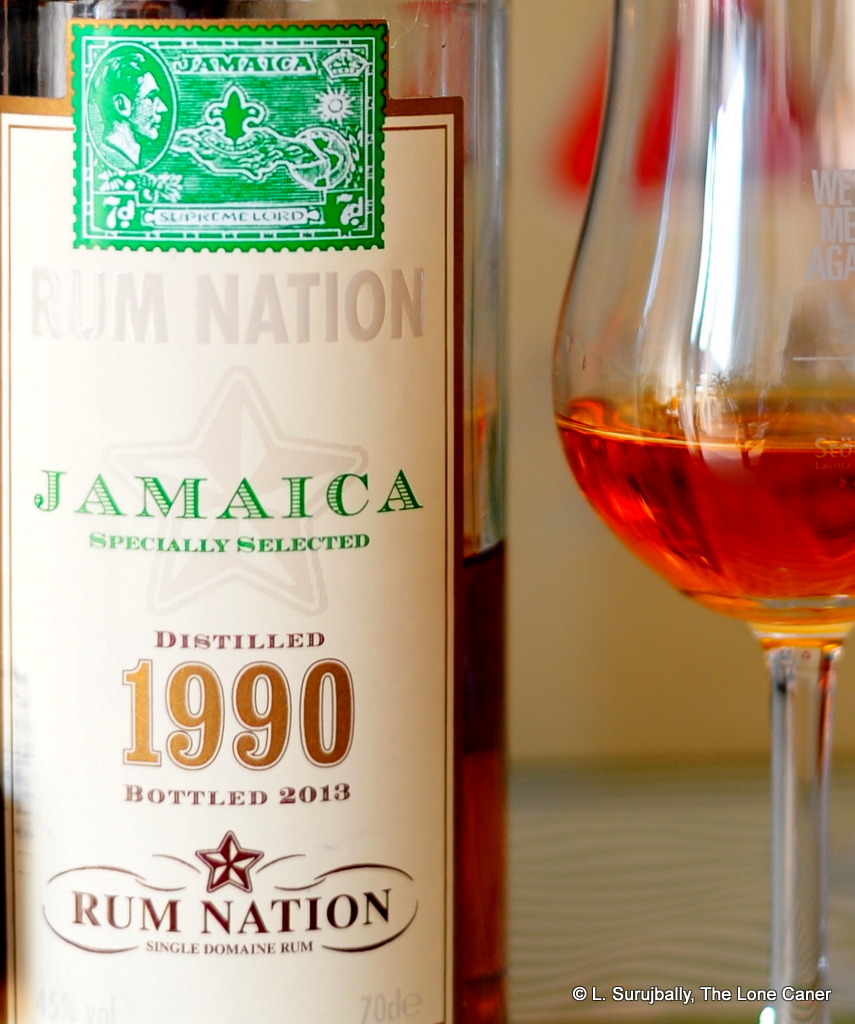



 Anyway, the Peruano 8: an dark gold-copper coloured rum, clocking in at 42% ABV, and deriving from the Trujillo gents who also make the Cartavio XO. Fabio told me once that some years back he was seeking a very light, delicate rum to take on Zacapa, and thought he found it in Peru, in the Pomalca distillery which also produces the Cartavio on what looks like a muticolumn still. The initial rums he got from there formed the Millonario 15 and XO rums, and these were successful enough for him to issue a Peruvian in its own right, aged for eight years in bourbon casks. No more mucking about with soleras here.
Anyway, the Peruano 8: an dark gold-copper coloured rum, clocking in at 42% ABV, and deriving from the Trujillo gents who also make the Cartavio XO. Fabio told me once that some years back he was seeking a very light, delicate rum to take on Zacapa, and thought he found it in Peru, in the Pomalca distillery which also produces the Cartavio on what looks like a muticolumn still. The initial rums he got from there formed the Millonario 15 and XO rums, and these were successful enough for him to issue a Peruvian in its own right, aged for eight years in bourbon casks. No more mucking about with soleras here.
